












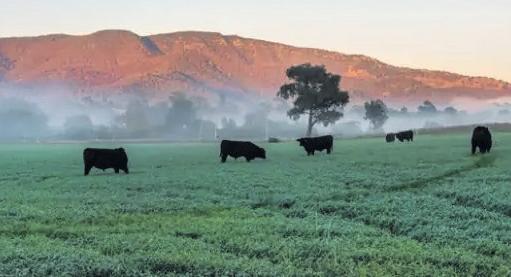
BROUGHT TO YOU BY HAROLD CURRY
PH: 02 6736 1344
TENTERFIELD MARKET REPORT
BULLOCKS SELL TO $1,842.29
Sale Date: 14.08.2023 Number Yarded: 318
Numbers increased this sale for a total yarding of 318 head, with the market trend in line with last week’s markets. A small yarding of steers reached 300 cents whilst a quality yarding of bullocks sold to 270 cents. In the cow section heavy weights sold to 220 cents, medium weights reached 198.2 cents, while lightweights
MC DOUGALL & SONS LIVESTOCK MARKETS WARWICK W/E 18/08/2023
Numbers remained about the same for the livestock sales as 894 head met the Beef sale and 2344 head met the Lamb & Mutton sale, the Pork and Poultry numbers were back as well as the goats for sale. The most sectors were on the frm to a shade easier for beef, with the lamb and mutton taking a tumble.
Vealer steers av 276.8c/kg topping at 334.2c/kg or $658.97 to $873.60
Vealer heifers av 206.1c/kg topping at 277.2c/kg or $516.09 to $800.15
Feeder steers av 299.7c/kg topping at 335c/kg or $1129.67 to $1590.00
Feeder heifers av 228.3c/kg topping at 258.2c/kg or $850.63 to $1339.41
Yearling steers av 293.4c/kg topping at 344.2c/kg or $929.41 to $1333.00
Yearling heifers av 225.7c/kg topping at 266.2c/kg or $769.57 to $1157.00
Steers av 284.7c/kg topping at 317.2c/kg or $1600.99 to $1838.08
Heifers av 226.9c/kg topping at 323.2c/kg or $1048.79 to $1733.28
Cows av 193.7c/kg topping at 226.2c/kg or $1071.61 to $1670.76
Bulls av 233.1c/kg topping at 266.2c/kg or $1674.32 to $2447.28
Lambs topped at $130 to av $71.72($19down)
topped at 170 cents, heifers sold to 288.2 cents. In the trade section weaner steers topped at 309.2 cents, whilst the heifer portion reached 234.2 cents, both returning to the paddock. The yarding of bulls sold to 239.2 cents.
TENTERFIELD TOP PRICES
BULLOCKS: BE & NT Warham $ 1842.29
STEERS: DB, JC & NA Lanz $ 1802.00
COWS: GN Rural $
1453.57
HEIFERS: DB, JC & NA Lanz $
Hoggets topped at $91 to av $59.07 ($17down)
Ewes topped at $77 to av $44.75 ($1up)
Wethers topped at $77 to av $56.07 ($19down)
Rams topped at $30 to av $24.33 ($6down)
Lamb Rams topped at $65 to av $36.43 ($4down)
Ewe lambs topped at $94 to av $82 ($25up)
Sale yarding of 2344 head was $15/ head down on last week’s sale.
Sows sold from $190 to $280, Barrows from $80 to $160, Pork from $50 to $200, Light Pork from $171 to $172, Stores from $70 to $161, Sow with a litter sold for $850. Roosters sold to $22.50, Hens sold to $30, Pullets sold to $35, Guinea Fowl sold to $22.50
MC DOUGALL & SONS
SHEEP & LAMB REPORT
Agents today y arded 2344 head to the market for the weekly sale. The market was fatter for most descriptions with most back by $6/head to $10/head. The lambs topped at $130 to av $71.72($19down), hoggets topped at $91 to av $59.07($17down), Ewes topped at $77 to av $44.75($1up), Wethers topped at $77 to av $56.07($19down), Rams topped at $30 to av $24.33($6down), Lamb rams topped at $65 to av $36.43($4down), Ewe lambs topped at $94 to av $82($25up), the total yarding of 2344 head averaged $65.83 a drop of $15/head week on week.
Winston Mc Namara sold Dorset x lambs 61.3kg to restockers for $130, to Thomas Foods for $117, wethers to Thomas Foods for $72
Tim & Mary Turvey sold 57kg Xbred lambs to Eversons for $105, 52kg to Thomas Foods for $97, 40kg
1558.35
YEARLINGS: Gerard Kelly $ 1680.00
VEALERS: Laurie Bell $ 728.14
BULLS: Bruce Sommerlad $ 2624.30
For Cattle Bookings contact:
Offce: 02 6736 1344
Glen: 0412 269363
Matthew: 0401 949323
NEXT SALE: 28TH AUGUST 2023, 9:00AM START
to restockers for $68, ewes to Eversons for $42 Stillwater Past Co sold Dorper x lambs 52kg to Warwick Meats for $105, 47kg to GR Prime for $99, 51kg to Jock Young Meats for $98
Andy Ferrier sold Dorper lambs 50kg to Tonys Supa Meats & Warwick Meats for $100, 37.5kg to restockers for $68
Warren & Wendy Schelbach sold Dorper lambs 52.5kg to Jock Young Meats for $110
Greg & Clancy Mc Gahan sold Dorper ewe lambs 51kg to Thomas Foods for $94
Rory & Kathy Frost sold Dorper lambs 46kg to Highchester Meats for $103, 60kg ram lambs to Warwick Meats for $60, 50kg lamb to Take IT Easy Meats for $84
Robert Deans sold Dorper lambs 44kg to Leslie Lamb for $100
Higgins Family sold White Dorper lambs 43.7kg to GR Prime for $75
Michael & Katrina Gibbs sold Dorper x lambs 39kg to GR Prime for $63, 50kg hoggets to Take IT Easy Meats for $80, Ewes to Eversons for $25
Maree Gerhardt sold Dohne x lambs 41kg to restockers for $53, 48kg hoggets to Eversons for $58, Wethers to Thomas Foods for $70, Ewes to Eversons for $38
Armstrong Family sold Dorper ewes to Thomas Foods for $72 & $68, Ewes to Eversons for $68 & $35
James Cowlishaw sold Merino ewes in the wool to Thomas Foods for $70, shorn Merino Ewes & Wethers to Eversons for $77
Snars Family sold light Dorper lambs 39kg and 29kg to restockers for $61 and $45
Glenlea Farming sold Dorper x hoggets 51kg and 47.6kg to Eversons for $65 and $54, 45kg to Highchester Meats for $50
This year, the National Rural Health Alliance (the Alliance) celebrates its 30th anniversary, having become an incorporated association on 11 August 1993.
The Alliance began, and has remained, as an important voice for rural, regional and remote Australians, to address their concerns in accessing health care and to bring recommendations and solutions to government and others.
The Alliance’s work has always been focused on fairness – the principle that people should have equal health status and access to health and related services equivalent to their city counterparts.
Although the Alliance was incorporated 30 years ago, its beginnings can be traced back to a 1976 government report that highlighted healthcare issues confronting rural communities.
In June 1990, the Australian Health Ministers’ Advisory Council established a Rural Health Task Force, and in the following year, the frst National Rural Health Conference was held in Toowoomba, Queensland.
Participants at the conference –representing rural communities, doctors, nurses, midwives, dentists, and allied health professionals – produced and adopted a National Rural Health Strategy. This strategy aimed for ‘optimal health for all people in rural and remote Australia’. During and after the Toowoomba conference, participants agreed on


challenges faced by rural communities,” said Alliance Chief Executive Susi Tegen.

“The Alliance is now a vibrant organisation, highly in demand for information, solutions and recommendations on rural health matters and valued for its unique position in the health sector, as an infuential voice for the 7 million people living in rural Australia and the health workers who support them.
the need to keep up the political pressure.
Soon after the endorsement of the Strategy by health ministers, the Commonwealth health department supported the establishment of the National Rural Health Alliance as an umbrella group for the diverse stakeholders in the rural health sector.
There were 12 groups represented at the frst annual general meeting, now recognised as Foundation Members.
We continue to work with many of these original groups on the important principles agreed at the inaugural conference.
The Alliance has continued to grow in infuence and witnessed a wealth of changes and initiatives in the rural health sector. However, people in rural areas still face a greater burden of disease, despite their ongoing and signifcant contribution to Australia’s economy.
“With the Alliance membership now comprising 47 national organisations, as well as hundreds of Friends of the Alliance, we are in a unique position to turn around the

“I’m thankful to our Members, Friends and partners, members of the Board and Council, as well as our dedicated staff, without all of whom – past and present – this journey would not have been possible. We also recognise and appreciate the ongoing support of the Australian Government Department of Health and Aged Care.
“We have come a long way and made great progress. However, we have a longer journey ahead to achieve our collective vision of healthy and sustainable rural, regional, and remote communities across Australia,” Ms Tegen concluded.
The National Rural Health Alliance (the Alliance) comprises 47 national organisations committed to improving the health and wellbeing of the 7 million people in rural and remote Australia. Our diverse membership includes representation from the Aboriginal and Torres Strait Islander health sector, health professional organisations, health service providers, health educators and students.
Today’s media reports of a new government plan to combat the spread of Red Imported Fire Ants only serve to further highlight the government’s continuing failure to fulfl one of its most basic responsibilities – the protection of Queensland’s environment, industries, and way of life from the threat of invasive pests and diseases, CANEGROWERS CEO Dan Galligan has said.
Just weeks after a damning strategic review of the National Red Imported Fire Ant Eradication Program was reported in the media, State and Territory governments met in Perth where they agreed to a new strategy of containment and eradication.
At that time, it was reported that the new plan would see a 10km wide eradication zone encircling southeast Queensland, from Caboolture in the north to Coolangatta in the south, which would undergo broadscale treatment to contain and prevent further spread outside already infested areas.
Under the new plan the treatment zone would gradually shrink, containing the destructive pest to a smaller and smaller area, until they could be fnally eradicated by 2032.
However, no one has actually seen the new plan until now, with reports that a lack of funding and resources will make this strategy virtually impossible to implement.
Instead, a much smaller treatment area around the Scenic Rim and Gold Coast will be targeted, effectively allowing one of the most dangerous and destructive invasive species in the world to continue spreading north and west unhindered.
“We’ve seen the destruction and devastation these ants have caused in other parts of the world,” Mr Galligan said.
“There is no question, we must stop them from spreading to other parts of the state and country, and we must eradicate them in the areas already infested.
“Unfortunately, the government allowed the continued spread of fre ants for two years while it sat on a damning report that outlined in very clear terms that a lack of funding, resourcing, and leadership was hamstringing the program and preventing it from achieving its goal – the eradication of Red Imported Fire Ants.”
Mr Galligan said that while under-resourcing was a huge issue, the program’s problems went much deeper than money.
“The government has made much of its new Fire Ant Suppression Teams (FAST) and how effective they will be at rapidly treating infestations, but our growers in the Rocky Point district south of Brisbane have seen frsthand just how ineffective eradication has been to date.
“Treatments are being conducted without clear and consistent communication with the local community, leading to infested areas being missed by the FAST team. The bottom line is, a lot of time and taxpayer money is being wasted on ineffcient treatment, which is clearly not preventing the spread of fre ants.
“All State and Territory governments, together with the Federal Government, must fully fund and resource an eradication program that has the leadership and expertise to actually get the job done. It is critical to the future of our industries and our way of life.”
Rocky Point cane grower Greg Zipf said recent efforts to suppress fre ants around the district had left “gaping holes” in the treatment area, rendering the whole process an expensive waste of time.
“Really poor communication between the FAST team, their contractors, and the local community is one of the biggest problems we face and it’s effectively torpedoing any chance we have of containing these ants,” Mr Zipf said.
“The local growers here spent a huge amount of manhours putting together information on infestations and mapping out nest sites on their properties.


“All of this info was provided to the FAST team. Whether they didn’t pass it on to their contractors or the contractors just decided to do their own thing, I’m not sure, but when the aerial treatment occurred there were huge gaping holes left in the treated area which made the whole the process a huge waste of time.”
The failure of the Fire Ant Eradication Program is indicative of a wider failure of the nation’s biosecurity system, Mr Galligan said.
“Australia is overrun with invasive species. Whether its cats, dogs, horses, camels, foxes, cane toads, ants or, probably the most problematic at the minute, feral pigs, we are simply not doing enough to tackle the destruction and devastation these species wreak on the natural environment and our industries.
“Agriculture loses hundreds of millions of dollars every year to feral pigs alone. They destroy farmland and crops, but also our native fora and fauna, yet they are breeding at unprecedented levels and most efforts to deal with this threat are complete failures.
“It’s time that state and national politicians started to fulfl their responsibilities to protect this country from the onslaught of invasive species.”
Boosted tracing and surveillance activities in the Kempsey area have uncovered a new cluster of Varroa mite infestations, with a further two infested premises (IPs) identifed today.
NSW Department of Primary Industries (DPI) Deputy Incident Controller, Dr Shannon Mulholland said it is likely more infested premises will be identifed, however low mite counts at the three IPs suggest the parasite has been detected at an early level of infestation.



“We have an evolving situation in the Kempsey area, and we don’t believe we have yet discovered the main case, which has resulted in NSW DPI issuing a new Biosecurity Emergency Order (29) to lock down hive movements to reduce any further spread,” Dr Mulholland said.
“The frst of these new detections was identifed


through a beekeeper undertaking a mandatory 16-week alcohol wash and reporting suspected mites. The second case was discovered as part of response surveillance activities.
“Beekeepers in the Kempsey area, and those who have moved hives from the region, are encouraged to immediately conduct an alcohol wash and report the results to NSW DPI.







“We extend our thanks to those beekeepers who are being so proactive, as their cooperation and support is allowing NSW DPI and its partners to undertake such a signifcant biosecurity response.
“By working together, we can eradicate Varroa mite and support Australia’s $437 million honey industry and $14.2 billion pollination dependent industries.”
Hive locations and alcohol wash results can be reported to NSW DPI by flling out the online forms at www.dpi.nsw. gov.au or by calling the Varroa Emergency Response Hotline on 1800 084 881.
Intensive priority surveillance will continue over the coming days and weeks.

“NSW DPI has already undertaken urgent priority surveillance on



over 200 hives in the area, and tracing of hive movements through or from the area or related to the existing IPs is underway,” Dr Mulholland said.
“We don’t know how long the cluster of mites has been in the area, however, it is clear it’s not a result of environmental spread from existing eradication zones, but likely due to human activity.
“We are working with local Police, Highway Patrol and the NSW Rural Crime team to monitor hive movements and to enforce compliance with the Control Order movement restrictions.”
The Varroa mite Emergency Response is overseen by the Consultative Committee on Emergency Plant Pests (representing all jurisdictions of government and sixteen industry members) and the National Management Group (senior Varroa industry party representatives including beekeeping groups and pollinationreliant industry groups as well as all state and Commonwealth governments).
For more information on the Varroa Mite emergency response, visit www.dpi.nsw.gov. au/varroa.


Farmers for Climate Action, an organisation representing more than 8000 Australian farmers, says two recent insurance reports have laid bare the rising cost of climate change inaction.
Research by the Actuaries Institute released today (Monday August 14) says the median home insurance premiums are up 28 percent in the year to March 31, the biggest increase in 20 years. People in food prone areas are facing price hikes of up to 50 percent.
The actuaries noted that part of the increase was due to higher building supply costs, but it was also “driven by climate change impacts we’re already seeing.”
This follows a
report last week by consumer group Choice, which found 87% of policyholders in Australia have seen insurance premiums rise,
and two in fve people reported having their homes impacted by an extreme weather event in the last fve years.
Ulmarra farmer Peter
Lake says climate change has made foods on his northern New South Wales farm more frequent and severe, and made his farm insurance
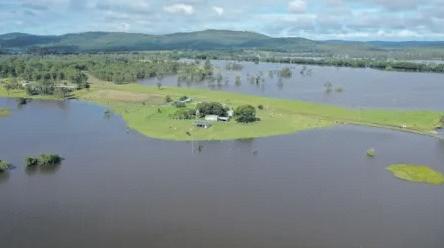
unaffordable.
“We’ve dealt with major foods in 2009, 2011, 2013, and 2021 but nothing could have prepared us for February
2022. We lost fences and fodder and were forced to sell most of our stock. Even when the waters receded we were food free but not mud free. We battled mud for months,” he said.
Since then the member of Farmers for Climate Action has seen his insurance bill skyrocket.
“I was quoted $19 000 per year to insure my farm which is just too much. We’ve had to weigh up not insuring our farm equipment, sheds and fences. We’re only insuring the house and a horse foat now.”
“To stop the costs of climate change going higher we need urgent action to reduce emissions, including from coal, oil and gas, right now, this decade,” Mr Lake said.
Three years after bushfres, then foods, devastated the Nymboida River, its revival is continuing to gather pace in and out of the water.
And the rejuvenation of the area is not just on land with the endangered eastern freshwater cod also benefting from the countless hours of hard workthat has been put in to help regenerate the catchment.
The latest boost to habitat on the Nymboida comes from a combination of community grants awarded to the Clarence River Chapter of OzFishUnlimited, Australia’s fshing conservation charity, following assistance from Landcare Bushfre Recovery Grants. Funds secured from the Foundation for Rural and Regional Renewal’s Yulgilbar Foundation will result in 5km of exotic weeds being removed from the riparian zone and 1000 local native plants established in their place.
A further three hectares of weed management and another 1000 trees are being funded by the Foundation for National Parks & Wildlife through
its bushfre recovery restoration grants.
OzFish and Landcare NSW volunteer groups in the region have used a long-term agreement to restore fsh habitat across New South Wales.
Trees will be planted on community education days and is backed by support from the NSW Recreational Fishing Trusts that will see local Landcare groups collaborate with recreational fshers to drive the restoration of fsh habitat on the Nymboida River and secure the future of the endangered eastern freshwater cod and other inhabitants, including
platypuses.
“The vegetation in the riparian zone, especially after the fres was pretty fragile,” said Alacia Cockbain, OzFish Project Offcer - NSW Coast.
The Nymboida is one of the last remaining breeding grounds of
a wild population of eastern freshwater cod. As recently as the 1980s there were less than 1000 left in the wild.
A breeding and restocking program for the freshwater cod has resulted in fngerlings being released while
an artifcial spawning habitat has been trialled in the river over the past year to further replenish numbers.
and all its tributaries upstream of its junction with the Clarence River from the beginning of August until the end of October.
This three-month fshing closure is during their breeding season when the cod are quite aggressive protecting their eggs from predators.
“They are totally protected. If people catch them by accident outside of the breeding season, they should keep them in the water and safely release them straight away,” Ryan Lungu, OzFish’s NSW Coast Program Manager, said. All fshing gear in or adjacent to these seasonally closed waters is prohibited with heavy fnes in place for anyone who transgresses.
One of the important elements to protecting the eastern freshwater cod is the ban on all fshing in the Nymboida River, Mann River
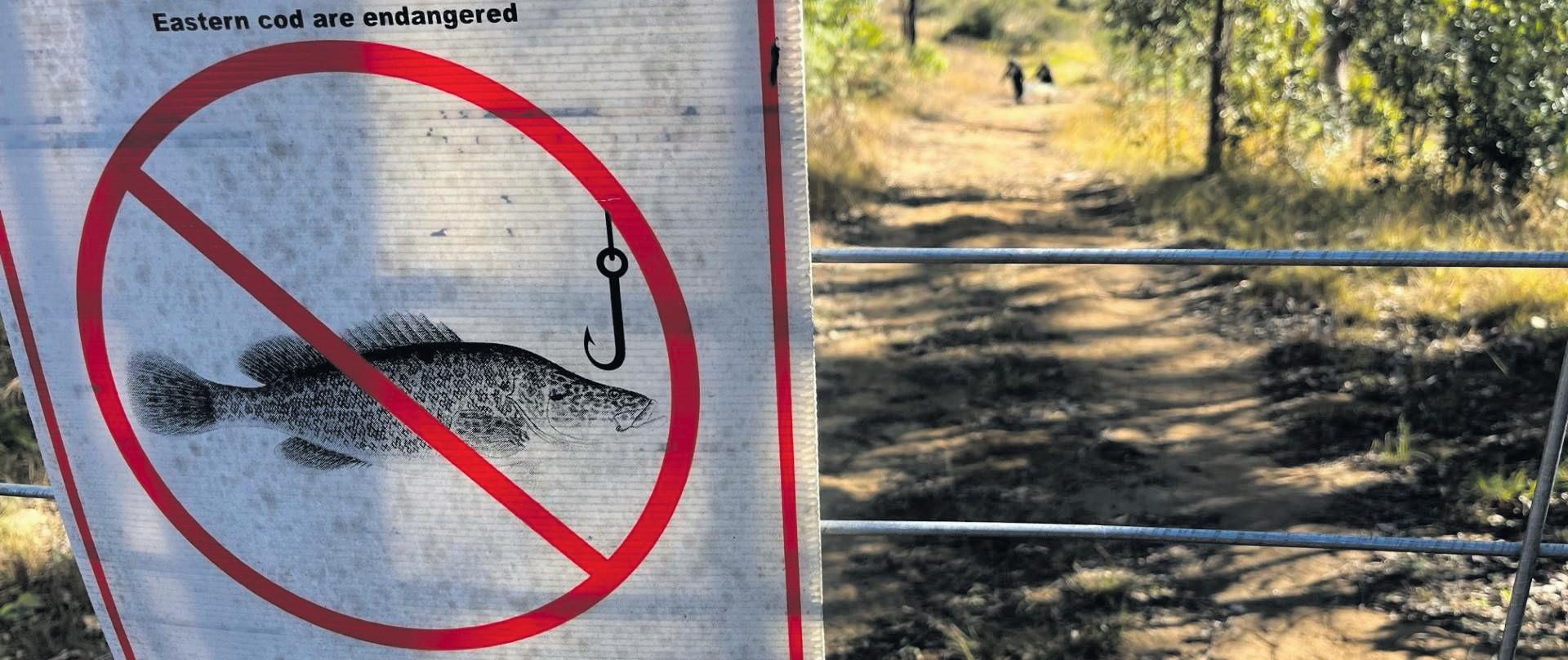
This project was made possible by the OzFish-Landcare NSW partnership, and funded by the Foundation for Rural and Regional Renewal’s Yulgilbar Foundation, the Foundation for National Parks & Wildlife, the NSW Recreational Fishing Trusts and BCF – Boating, Camping, Fishing.

The Brisbane Valley Santa Bull Sale will be held at the Toogoolawah Showgrounds on Wednesday 13th
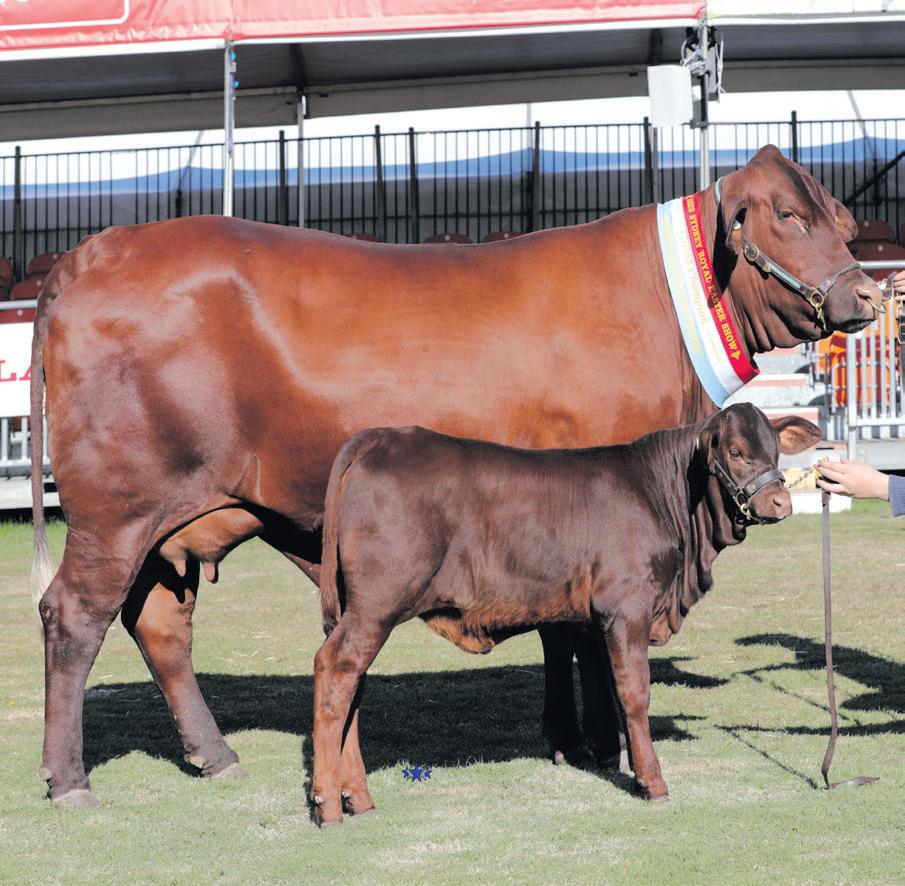
September commencing at 12-30 pm where 72 quality, commercially focussed, herd improving bulls and 5
classifed heifers will go under the hammer of guest auctioneer Innes Fahey of Copmanhurst. All bulls have been vaccinated for Vibrio, 3 day, 7 in 1 and blooded with 3 germ blood for tick fever. All sale bulls will also be scanned
for Rib and Rump Fat, Rib Eye area and Intramuscular Fat.
The nine studs represented in the sale are all domiciled east of the great dividing range where their cow herds run on forest country giving these bulls a
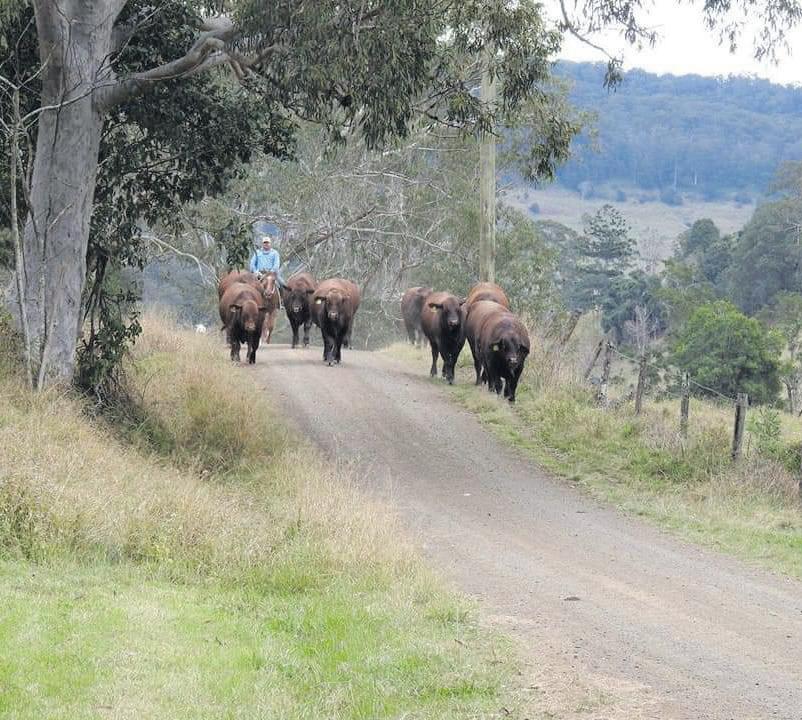
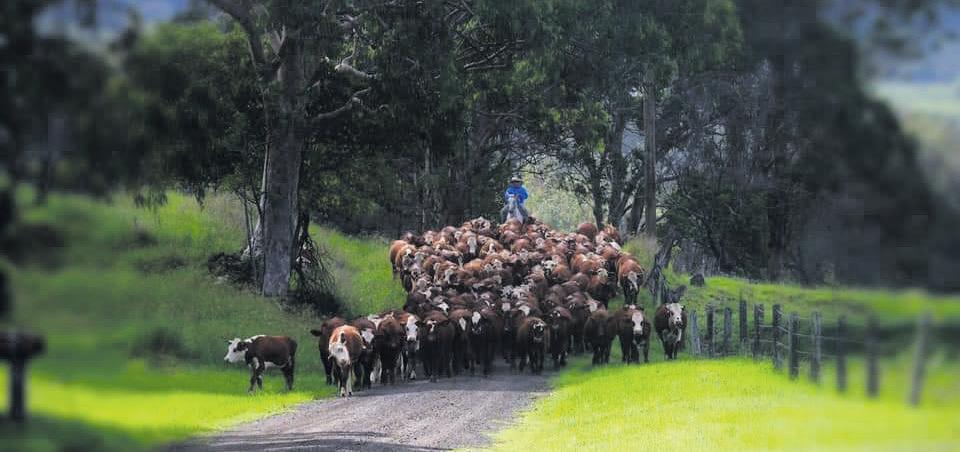
natural doing ability to perform wherever they go. Bulls from these studs continue to perform well in leading Santa Gertrudis studs around the country, as well as large scale commercial operations.
There is a wide range of genetics represented in the sale with 23 individual sires giving 90% of the draft being classifed as stud sires. Also, within the draft of 72 Bulls, 54 are poll or poll scurr bulls.
Bulls to look at with outstanding performance is the draft of bulls
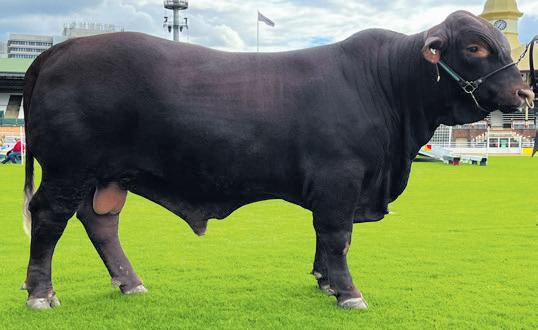
all Poll at this years sale. Welbatch is currently operated by Scott, Therese, Taylor and Darby Humphreys, and in addition to joining approximately 100 Stud females, they also operate a commercial operation of around 400 Santa cross cows, turning off EU weaner steers and a select line of Santa/Hereford cross females annually.
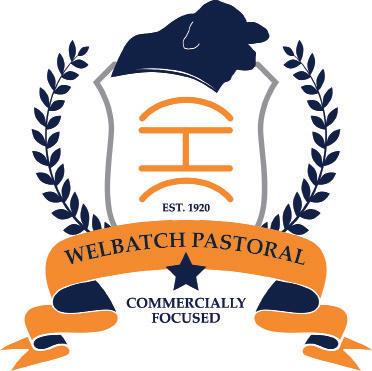
Welbatch Santa Gertrudis stud have had tremendous success in the show ring in the last two years, with Multiple broad ribbon winners
at Sydney and Brisbane Royals. The stud exhibited the Senior and Grand Champion female and Best Santa Gertrudis Exhibit with Welbatch Ultra at Sydney Royal for the second year in succession.
The vendors are offering freight assistance to these centres - Murgon, Gayndah, Eidsvold, Dalby, Coolabunia, Beaudesert, Casino and Moreton Saleyards if agents are contacted prior to the sale .
Sole agents for the sale are Sheperdson and Boyd and it will be interfaced with AuctionPlus . Catalogues are available by contacting Scott Humphreys 0438 169 157 or can be downloaded from the link on the Brisbane Valley Facebook Page.
being offered by local studs Welbatch, who were established as a Santa Gertrudis stud in 1988 at Mummulgum in Northern NSW. The stud has been offering bulls at the Brisbane Valley sale for the previous 6 years. This year will see Welbatch offer a draft of 12 bulls,
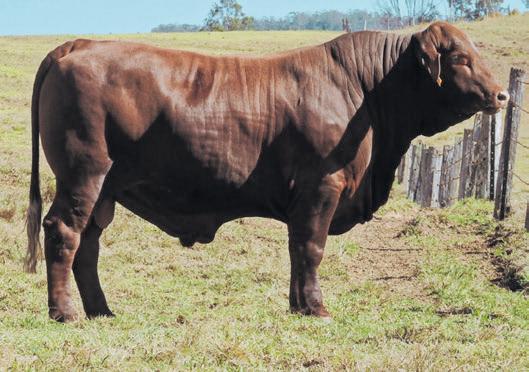
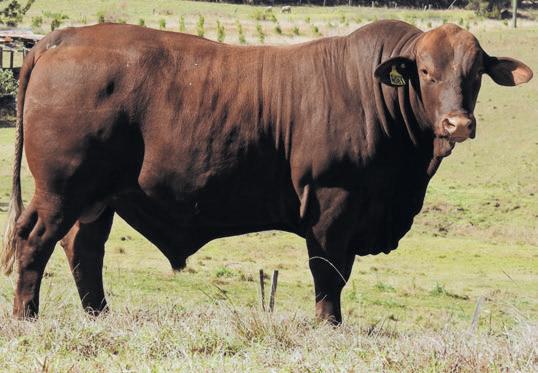
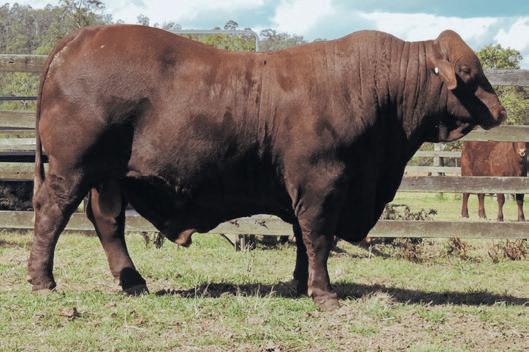
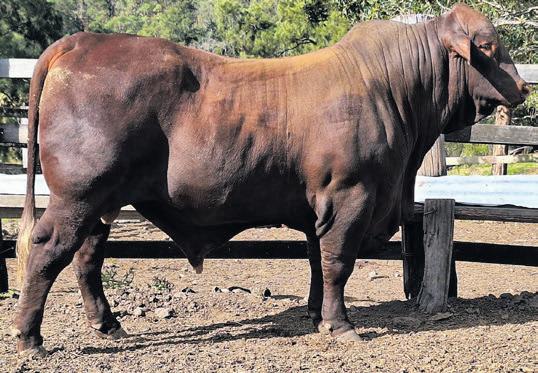




























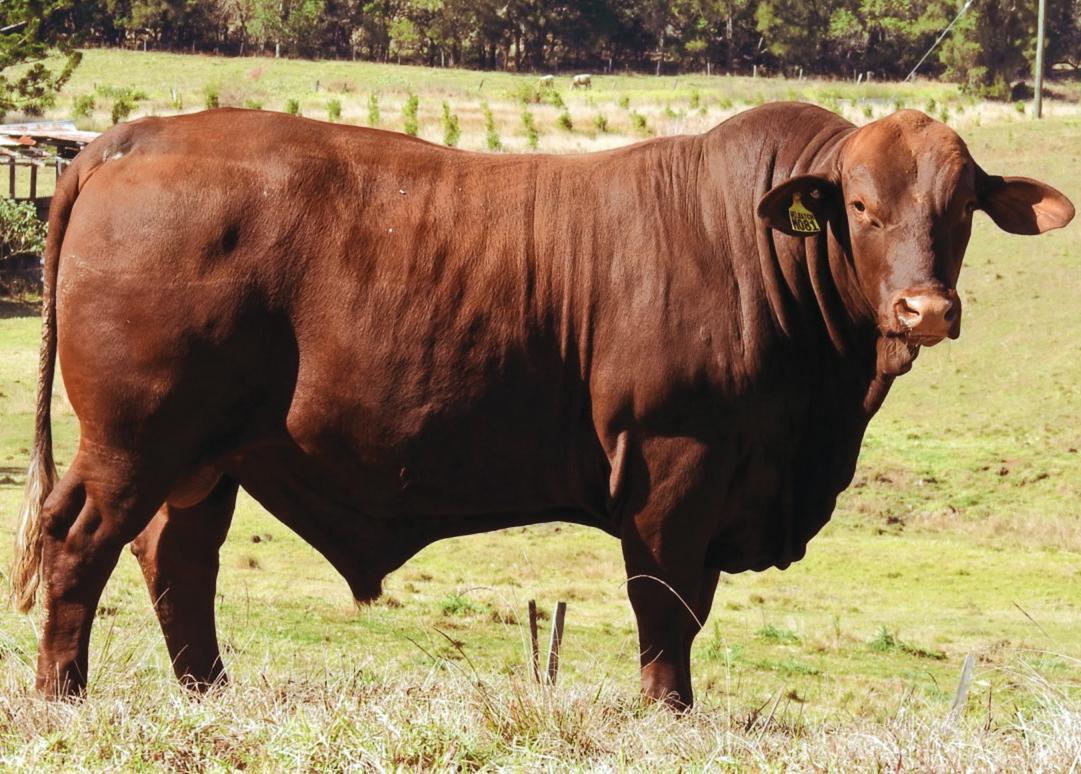
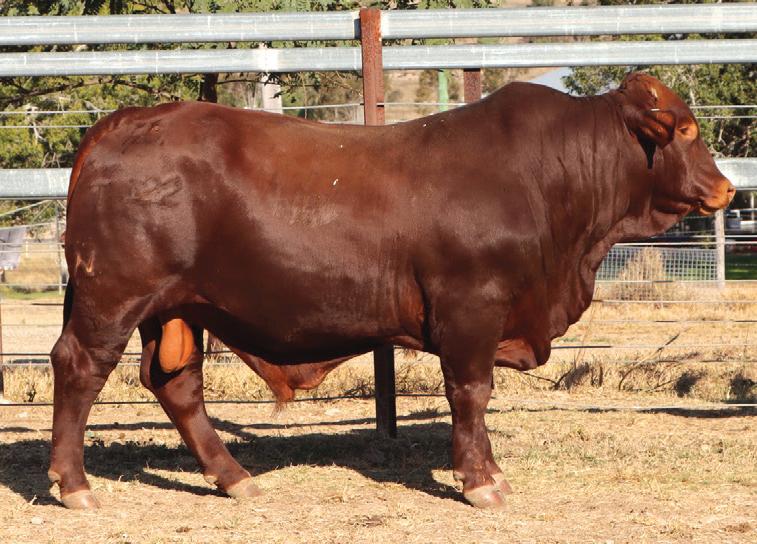

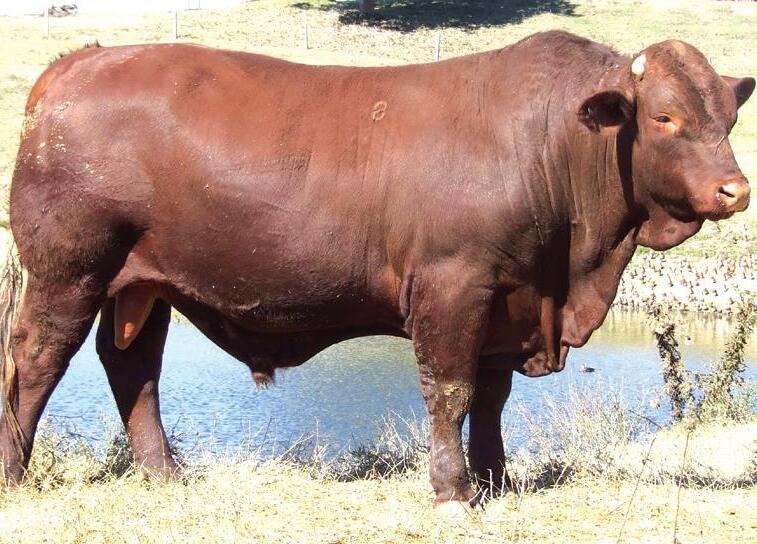

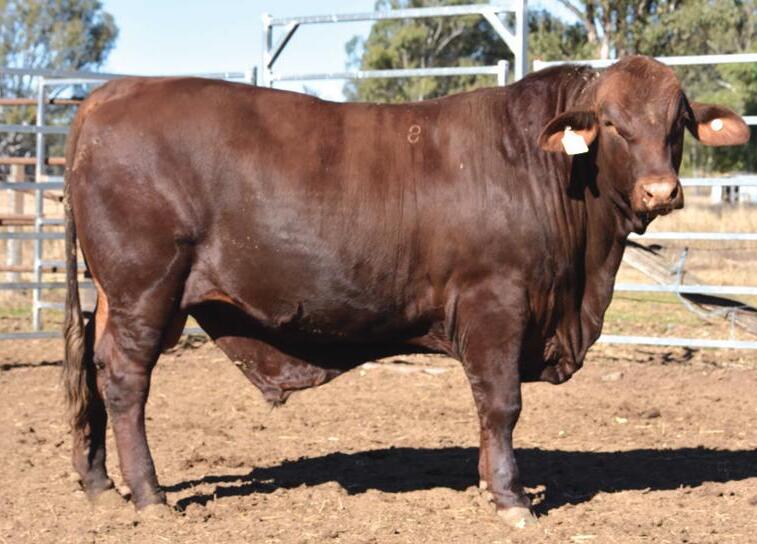


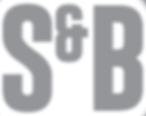



The National Farmers’ Federation National Conference program is locked in, bringing together some of Australia and the world’s most eminent thought leaders in Canberra on October 26-27.
This year’s theme ‘Australia to the World’ will look at Australia’s role in feeding the world, its trading relationships, and global leadership in sustainability and innovation.
NFF CEO Tony Mahar said Australian agriculture was standing at a precipice of emerging opportunities in trade while political infuences across the globe were impacting the sector both here and overseas.
“We’ve just had free trade open up with

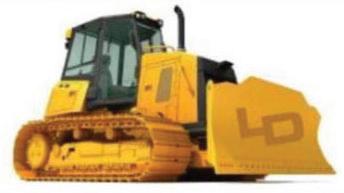




the UK, tensions with China are thawing, new opportunities are developing with the EU and countries like India, all in the face of a growing global population,” Mr Mahar said.
“But farmers are also facing signifcant barriers and this is being felt across the globe with mounting pressures on emissions reduction and changing consumer expectations.
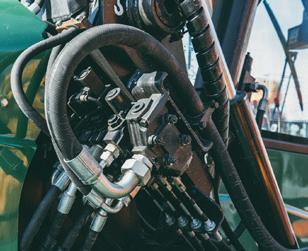

“It’s pushed Dutch farmers to the brink where they are protesting on regulations being imposed on them, so we are excited to hear from the founder and leader for the Farmer-Citizen Movement in the Netherlands, Caroline van der Plas at the conference.
“Alongside Ms van der Plas, the program includes a number of speakers looking at global trade, policy and opportunities from all angles, as well as grassroots insights from farmers and media personalities.”
Program snapshot
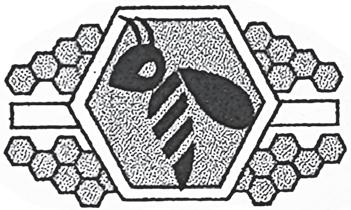
• Technology futurist Dr Jordan Nguyen on the megatrends in AI, virtual reality, gene editing and robotics and what this could mean for agriculture.
• Cricketing legend Glenn McGrath will share his story including his foundation’s work with health services in rural Australia.
• ABC News Breakfast co-host and Muster Dogs narrator Lisa Millar will share her
story from growing up in regional QLD to coming full circle with the smash hit show Muster Dogs.
• NZX Head of Analytics, Julia Jones, will unpack global macro trends and their impact on agri sector prosperity.
• Director of the Bill & Melinda Gates Foundation Nick Austin, Former World Vision CEO Tim Costello and Foodbank CEO Brianna Casey will discuss the global food security crisis.
• ABARES’ Dr Jared Greenville and Rabobank Global Strategist Michael Every will discuss the sector’s performance and the shifting sands of global trade.

• A huge political lineup, including
Agriculture Minister Murray Watt, Trade Minister Don Farrell, Communications Minister Michelle Rowland, Nationals Leader David Littleproud, and Member for Indi Helen Haines.
• Event MC is Channel 7 presenter and Telling Our Story podcast host, Angie Asimus, who will also record a podcast interview live on stage.
“Along with exploring the opportunities and challenges on our doorstep and what they mean for farmers, the conference program includes social events and the graduation breakfast for our fagship Diversity in Agriculture Leadership Program.
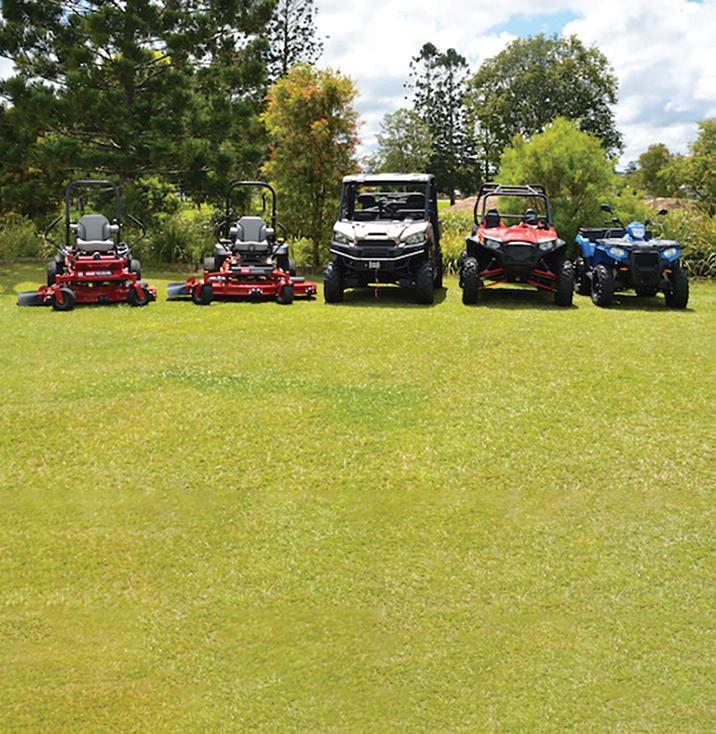
“A highlight will be
getting a taste of how Aussie food is served around the world at the Nutrien Global Food Fair – with live entertainment and tasting stations representing our global markets,” Mr Mahar said.
“Without doubt, the conference is an unrivalled national event that brings together farmers and agricultural leaders from all corners and commodities of our industry.”
Discounted early bird tickets are available until Sunday 27 August, be quick to secure yours. For tickets and the full program visit nffconference.com.au
Increasing interest rates, infation, rising living costs and concerns about the future are among the primary causes of community concern for people living in regional Australia, according to a new survey by Beyond Blue. However, despite the importance of seeking help for mental health, many Australians are hesitant to do so, especially in rural areas where there is a stigma surrounding mental illness.
Research shows that being connected to others is crucial for mental wellbeing and can serve as a protective factor against anxiety and depression. Zoetis, the leading animal health business, has partnered with Beyond Blue for seven years to support mental health initiatives and reduce stigma around mental illness in rural and regional Australia. During this time, Zoetis has raised $700,000 for the Beyond Blue Support Service by donating $5 from each sale of the company’s livestock, pig, and poultry vaccines and drenches. In 2023, Zoetis
has set a goal to raise an additional $100,000 by the end of the year.
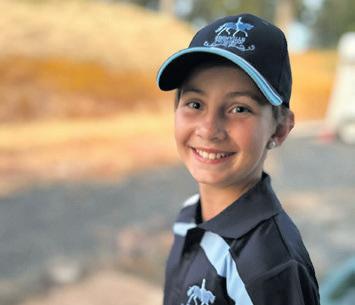
Lance
Williams, Zoetis Senior Vice Presidentand Cluster Lead, Australia and New Zealand, says, “Zoetis works closely with rural Australia through interactions with the country’s farming community, agricultural stores, veterinarians and their families. We are proud to once again be supporting Beyond Blue and the important work they do.”
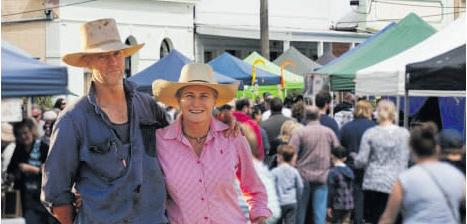
“The farming community has endured many challenges over the years. Through economic insecurity, social isolation, loneliness, and insecure work, we’re seeing an increase in many of the factors that drive mental health challenges. Rural Australia and country people are stoic and display considerable courage, however, the impact on mental health has been signifcant for many.”
Patrice O’Brien, Beyond Blue Chief Community Offcer, says, “Social connections are closely tied to our
physical and mental wellbeing. Feeling connected with others can reduce stress and build resilience. Having someone to talk to and support you is important. People in rural Australia are known for their resilience in times of crisis, but even the most resilient need extra support at times. Timely diagnosis, treatment, and ongoing management of a mental health condition in rural areas are likely to occur later or not at all, often resulting in an increased probability of the most tragic of outcomes. We want everyone to know that support is available.”
The journey to better mental health can start with small actions. “It’s important to make looking after ourselves a priority. Maintaining social connections, keeping in touch with friends and family, and being part of a community provides a supportive network. Also, understanding which tools and strategies work well for you in tough times and reaching out for that extra support when
you need it are really important,” says Ms O’Brien.
“You are not alone, and you don’t have to work things out by yourself,” says Ms O’Brien. “Seeking support at the frst sign you’re not feeling quite yourself can make it easier to bounce back and maintain good mental health. Sometimes, just talking to someone can make a difference.”
People can support the Zoetis initiative between 15 July and 31 October 2023. For each sale of the company’s livestock, pig and poultry vaccines and drenches Zoetis, will donate $5, up to
$100,000, to Beyond Blue. Mr Williams continues, “The money raised goes directly to the Beyond Blue Support Service to continue helping people living in remote areas. To date, thanks to Zoetis’s donation, over 14,000 people have been able to get the support they need through the service. Together we have made strong progress in supporting the mental health and wellbeing of those who live in rural Australia, and we are passionate about helping again this year.”
For more information on how you can help Zoetis to raise vital funds
to support mental health in rural communities through its partnership with Beyond Blue please visitwww.zoetis.com.au. For more information about depression and anxiety, visit www. beyondblue.org.au. The Beyond Blue Support Service offers free and immediate counselling, advice and referrals via phone, webchat or email. To talk to a mental health professional for free, contact the 24/7 Beyond Blue Support Service on 1300 22 46 36. Free web chat is also available 24/7 at beyondblue.org. au/support-service/chat and you can join the Online forums for free.
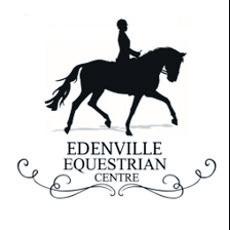


Please contact us on 0266335321

Zoetis and Beyond Blue support the mental health of Australia’s rural communitiesLance Williams, Zoetis Senior Vice President and Cluster Lead, Australia and New Zealand and Patrice O’Brien, Beyond Blue Chief Community Offcer.